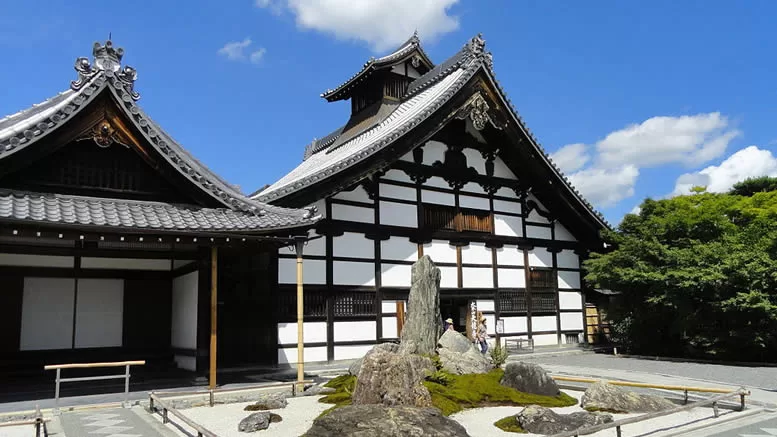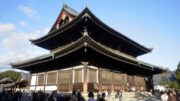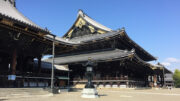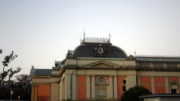Located in the scenic Arashiyama district on the western outskirts of Kyoto, Tenryu-ji Temple is the largest and most significant of the area’s temples. Founded in 1339 at the beginning of the Muromachi Period, Tenryu-ji is celebrated as one of Kyoto’s Five Great Zen Temples and holds a prominent place in Japanese cultural heritage as a UNESCO World Heritage Site.

Tenryu-ji was established by the ruling shogun Ashikaga Takauji to honour the late Emperor Go-Daigo. This act of devotion was meant to appease the Emperor’s spirit following a significant fallout between the shogun and the Emperor, who had previously been close allies. The temple’s creation marked a crucial moment in Japanese history, reflecting the complex interplay of power, religion, and politics during the period.
Highlights
While the original structures of Tenryu-ji have been lost to a series of wars and major fires, the temple’s garden remains a testament to its historical beauty. Designed by the renowned Zen monk Musō Soseki, the garden continues to reflect the serene and contemplative landscape of centuries past. It remains a quintessential example of Japanese garden design, incorporating elements of natural beauty and Zen philosophy.
Zen Meditation Hall: The only building to survive the devastating fire of 1864, this hall offers a glimpse into the temple’s enduring legacy. Its survival is a poignant reminder of Tenryu-ji’s resilience through the ages.
Kuri Building: Constructed in 1899 and meticulously restored in 2013, the Kuri Building originally served as living quarters. It features a distinctive white plaster and timber façade with a gracefully curved gable roof. Inside, visitors can admire an impressive painting of Bodhidharma, an Indian monk and founder of Zen Buddhism. Today, the Kuri Building houses the temple’s administrative offices and a kitchen.
Seasonal Attractions
Tenryu-ji Temple’s grounds are particularly vibrant during the cherry blossom season in spring and the autumn foliage period. During these times, the parklands come alive with a spectacular array of colours, attracting numerous visitors who come to enjoy the natural beauty and serene atmosphere. The temple’s gardens, especially during these peak seasons, offer a picturesque setting that enhances the overall experience.
With its rich history, architectural beauty, and stunning gardens, Tenryū-ji Temple is a must-visit destination in Kyoto. Whether you are a history enthusiast, a nature lover, or simply seeking a peaceful retreat, Tenryu-ji offers a unique and enriching experience in one of Kyoto’s most scenic districts.
Nearby Attractions
While visiting Tenryū-ji Temple, explore these nearby attractions to enhance your Kyoto experience:
Bamboo Grove: Just a short walk away, the iconic Sagano Bamboo Grove offers a magical stroll through towering bamboo stalks, creating a tranquil and immersive natural experience.
Togetsukyo Bridge: Spanning the Hozu River, this picturesque bridge provides stunning views of the surrounding landscape and is especially beautiful during cherry blossom and autumn foliage seasons.
Okochi Sanso Villa: A historical villa with beautiful gardens, located near Tenryū-ji, offering a glimpse into traditional Japanese garden design and a chance to enjoy a cup of matcha tea.
Access Information
Tenryū-ji Temple is conveniently accessible by various means of transportation:
By Train: The temple is a short walk from Saga-Arashiyama Station, which is served by the JR Sagano Line. Alternatively, visitors can take the Keifuku Electric Railway (Randen) to Arashiyama Station and enjoy a pleasant walk through the charming streets of Arashiyama.
By Bus: Several Kyoto City Bus lines connect to the Arashiyama area. The nearest bus stops are Arashiyama and Tenryuji-mae, both within easy walking distance of the temple entrance.
Official Website
https://www.tenryuji.com/




